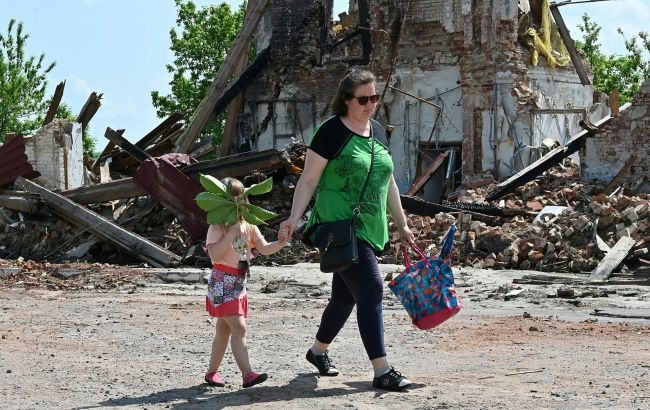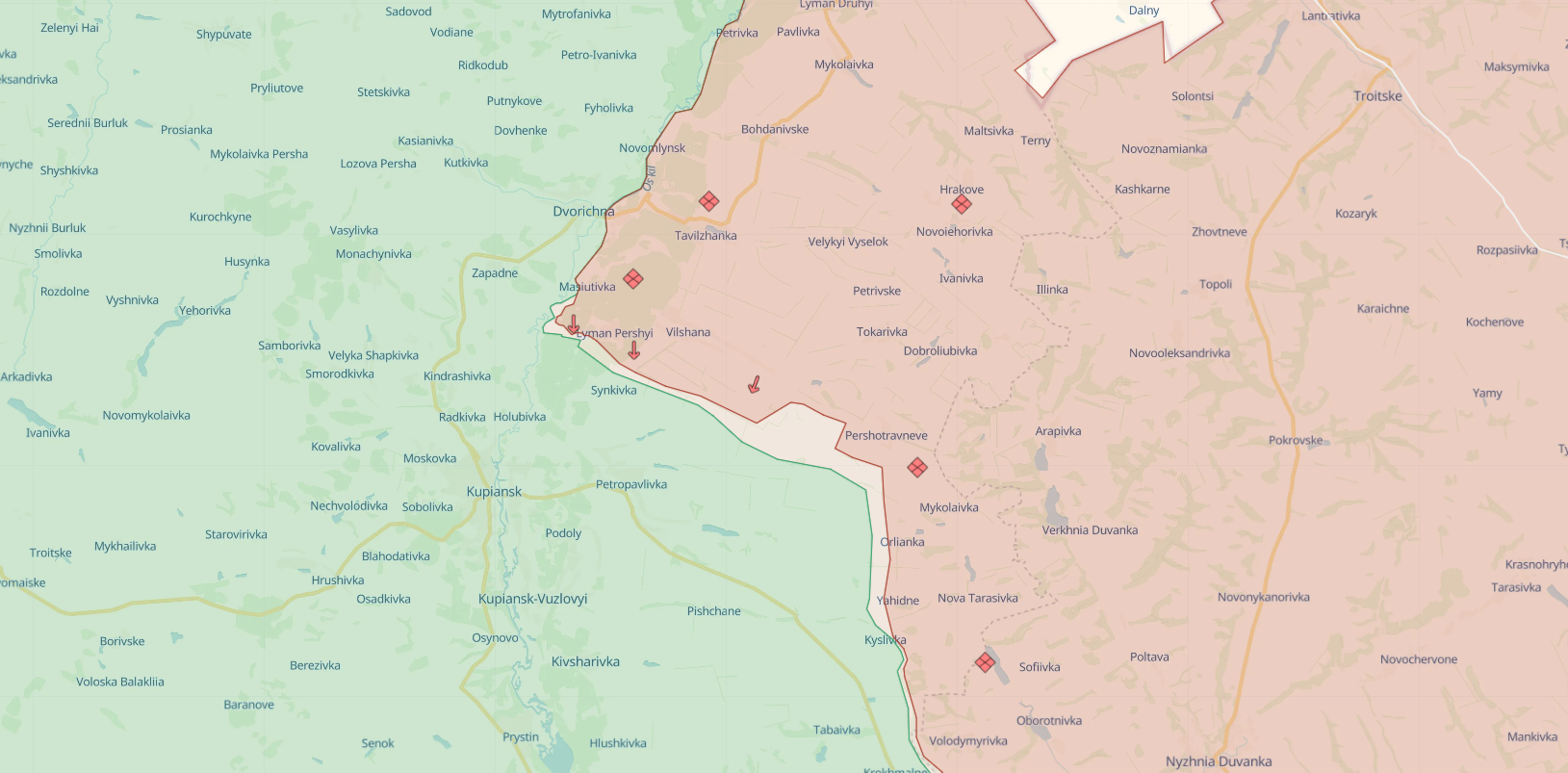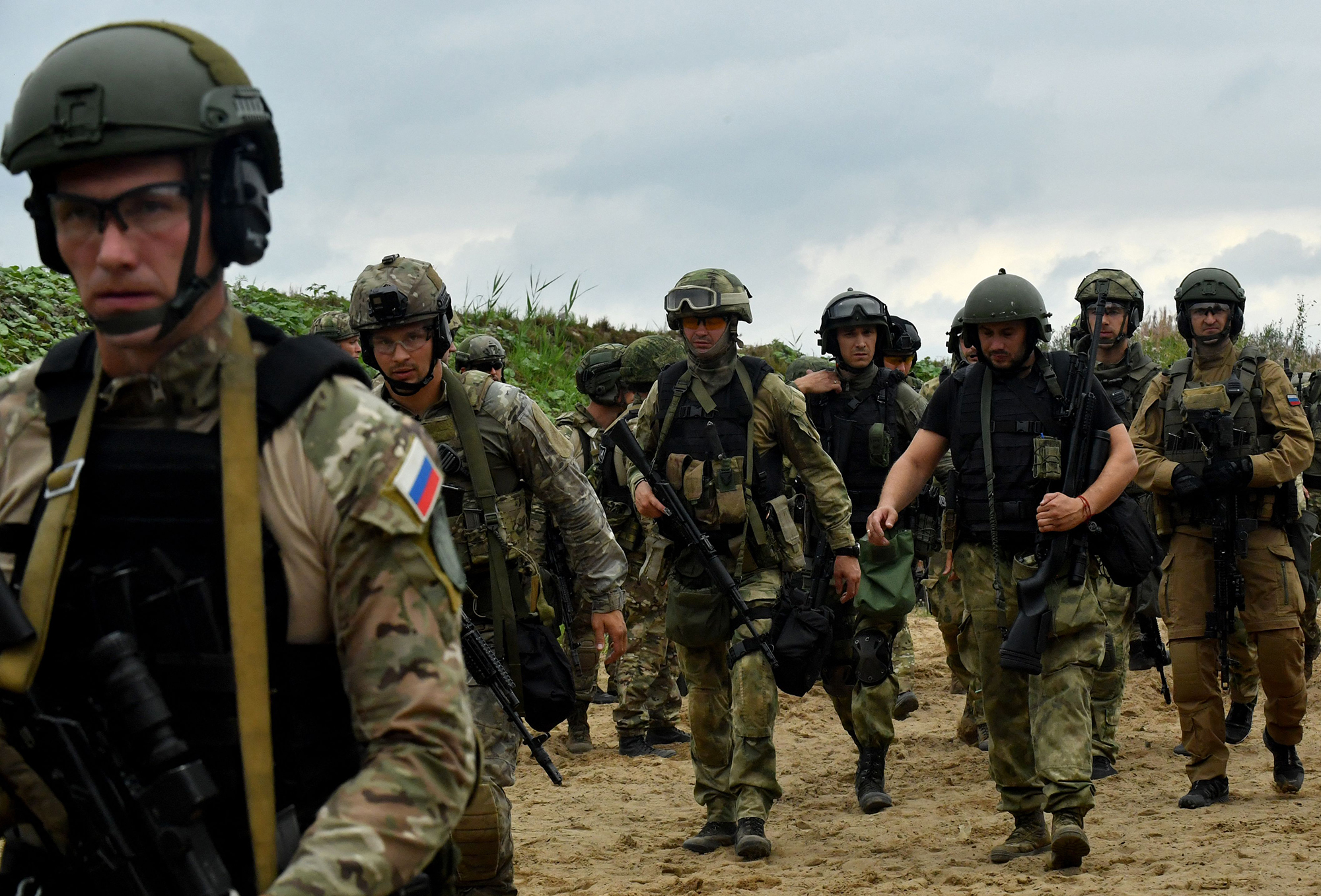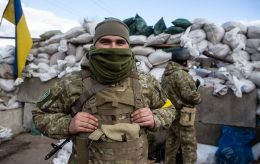Russia retaliates for fall: What's happening and could it become another Bakhmut
 "The aftermath of one of the airstrikes on Kupiansk (Photo: Getty Images)
"The aftermath of one of the airstrikes on Kupiansk (Photo: Getty Images)
The epicenter of the conflict in the east has shifted to Kupiansk, the Kharkiv region. Russia is escalating the number of shelling incidents and deploying infantry for "human wave attacks" - something reminiscent of last year's events near Bakhmut.
Read about the current situation and the possibility of Kupiansk becoming another Bakhmut in the article.
Kupiansk became the hottest point
During the full-scale invasion, the city in the eastern Kharkiv region was under Russian occupation for nearly half a year until the Ukrainian Armed Forces' fall offensive. Throughout October and November, the enemy was pushed back from the outskirts by about 15 km, but since then, they have been advancing from the east and northeast.
Kupiansk endured constant Russian shelling, which intensified significantly at the end of June and early July. This coincided with the Ukrainian Defense Forces launching a counteroffensive in the south and liberating the first few villages.
In mid-July, Deputy Defense Minister Hanna Maliar spoke about the localization of battles and Ukrainian initiatives. Within a few weeks, the Kupiansk direction became the hottest point.
According to the DeepState service, during this time, the enemy managed to advance closer to the village of Synkivka by 10 km from the district center. There is also an offensive in the area of the villages of Orlianka and Mykolaivka to the east of Kupiansk. The so-called Russian "war correspondents" claimed the supposed capture of positions 7 km from the city. However, there has been no confirmation of this so far.

Photo: Russians advancing towards Kupiansk from the northeast (deepstatemap.live)
According to the National Guard spokesperson Ruslan Muzychuk, the enemy launches assaults with aviation and artillery support. Occupying forces deliver more than 50 airstrikes daily, sometimes up to 80. The spokesperson of the Eastern Grouping, Serhii Cherevatyi, also notes intensive fire from all types of artillery.
Civilians and civilian objects are suffering. In just the past week, projectiles and guided bombs landed in the vicinity and even within Kupiansk itself, resulting in casualties. Among the affected structures was the city administration building. Against this backdrop, a mandatory evacuation has been declared for nearby settlements on the left bank of the Oskil river.
Non-strategic nature - non-strategic goal
The main objective of the adversary is to break through the defense, reach Kupiansk, and regain lost positions. It's a kind of satisfaction for their retreat in the fall of 2022.
"They have a clear plan. Their objective is to reclaim territories in the Kharkiv region that they had previously forfeited," stated Hanna Maliar, emphasizing that the intensity of the combat is so high that some positions change hands multiple times a day.
According to British intelligence, the Russians are advancing to create a buffer zone around the captured Luhansk region. The intensification of the direction towards Kupiansk is crucial for the Kremlin's leadership due to significant problems on the southern front. The capture of the Luhansk region was announced as one of the goals of the war with Ukraine, and the buffer zone towards the Oskil river is intended to protect the "new territorial realities."
Military expert Vladyslav Seleznov states that the advance towards Kupiansk was carefully planned within the framework of the strategy developed by the Chief of the General Staff of Russia, Valery Gerasimov. The implementation started after sufficient resources were accumulated, and it's not only happening near Kupiansk.
"Recently, they attempted to attack our positions towards Borova in the Kharkiv region. They were repelled, suffered significant losses, withdrew, and regrouped. Now, they have resumed advancing towards Borova while simultaneously exerting pressure on Kupiansk from the north along the Oskil river and from the southeast from Svatove (the Luhansk region- Ed.)," he states in a comment.
In his opinion, this is being done to firstly draw our reserves away from the south of Zaporizhzhia region and secondly, in case of success, to establish themselves in new positions. Ideally, they would want to reach Kupiansk-Vuzlovyi with its major railway junction since the railway is a cornerstone of Russia's logistics. Then they might attempt to reach the river and, perhaps, after establishing a status quo, try to push Ukraine into unfavorable negotiations.
"Is this achievable? I believe not. The situation there is highly dynamic. It's no coincidence that Syrskii (Commander of Ground Forces - Ed.) is actively engaged there. I have faith in his talent, the resilience, and courage of our soldiers, including the additional units that have been recently deployed to reinforce the frontlines," the expert adds.
It's worth noting that in recent days, General Syrskii has visited the brigades near Kupiansk twice. On the eve, he assured that several important decisions had been made to strengthen the defense.

Photo: Representative of the Military Intelligence Vadym Skibitskyi emphasizes that the actions of the Russians near Kupiansk do not have a strategic character (Vitalii Nosach/RBC-Ukraine)
Representative of the Military Intelligence Vadym Skibitskyi emphasizes: the Russians are not achieving success, and their military actions do not have a strategic character.
Military-political observer of the "Information Resistance" group, Oleksandr Kovalenko, explains that the advance towards Kupiansk and Borova is a kind of demonstration. The adversary does not have a serious offensive potential here, and they are well aware of it.
"They need to divert attention. There's a reason why the propaganda started calling Kupiansk the second Bakhmut. They claim that there is only 7 km left to the city, which they somehow spotted from some direction. But the question is different – how far did they advance this 7 km, for example, towards Bakhmut?" the expert says.
According to him, the Russians are building up the fetish of Bakhmut in anticipation of another epic battle, although in reality, the advance towards Kupiansk is nothing more than an imitation. This is also done to convince the internal audience that they can afford to advance.
The actual number of troops indicates a non-strategic character. Even after reaching the Oskil river, in order to advance further to the west towards Kharkiv, the Russians will need very large forces. Which they currently lack.
Who is from the other side?
As of July, the Russians have deployed about 100,000 soldiers, over 900 tanks, and 370 multiple launch rocket systems towards the Lymansk-Kupiansk direction. As stated by the spokesperson of the Eastern Operational Group, Serhii Cherevatyi, approximately the same number of personnel was engaged by the Soviet Union at the peak of the invasion of Afghanistan.
"For understanding, at the peak, the number of Soviet troops in Afghanistan was 120,000. This was before the last war that Ukrainians could remember, before this big war. And there (near Lymansk and Kupiansk- Ed.), over 100,000 are facing Ukrainian soldiers," he asserted.
Moreover, the Russian formations include airborne troops, elite motorized infantry units, combat army reserves, territorial troops, private military companies, and assault squads.

Photo: Serhii Cherevatyi estimates the Russian grouping near Lymanske-Kupianske direction at 100,000 people (facebook com sergij cerevatij)
The Lymansk-Kupiansk front stretches for about a hundred kilometers, so obviously, there are fewer occupiers right near Kupiansk.
"Here, units and formations from the composition of the 1st guard's tank army, the 6th combined arms army, and a number of units and subdivisions of the 11th army corps of the Baltic fleet are concentrated, their best forces. According to data from about a month ago, there are no fresher ones, the personnel strength is up to 50,000, about 400 tanks, 650 armored vehicles, almost 250 artillery systems, and 125 units of multiple launch rocket systems. So, it's a very powerful grouping, especially the artillery component," assessed expert Vladyslav Seleznov.
The parallel with Bakhmut immediately comes to mind when the Russians threw roughly the same number of people into the "meat grinder." But in Seleznov's opinion, the forces cannot be compared, if only because the Bahmut fortress was mainly stormed by former prisoners of the Wagner PMC, while under Kupiansk, the "cream of the crop of the Russian army" is working.
And objectively, for assessing the enemy's forces, it should be remembered that there is also a certain grouping of forces and means in the bordering Belgorod, Bryansk, and Kursk regions, which can be deployed for reinforcement at any time.
More зarallels with Bakhmut
Certain similarities can be observed in how the combat operations are conducted. Today, Serhii Cherevatyi stated that in a sense, the enemy is repeating the Bakhmut tactics in the Kupiansk direction.
"They are engaging the so-called 'Storm-Z' squads. It's a replica of the 'Wagner' units. Perhaps, even less successful... The 'Wagner' fighters had powerful training camps in the same Rostov region. 'Storm-Z' is being prepared much faster, but the element being recruited there is similar. Typically, these are people with a criminal past. Or those who, under pressure from law enforcement agencies, facing the risk of being convicted, sign contracts," he explains.
It should be noted that the "Storm-Z" units appeared in the spring of 2023 and were created under the Ministry of Defense of Russia following the example of Yevgeny Prigozhin's private army. The militants are recruited under similar conditions - cancellations of terms and payments of $2,200 per month.

Photo: Russian prisoners from the "Storm-Z" units are being used for assaults near Kupiansk (Getty Images)
According to the American Institute for the Study of War (ISW), assault squads are attached to various units. Typically, they consist of around 100 people divided into groups for assault, fire support, reconnaissance, and so on. Each of these squads underwent up to 15 days of training before being sent to the front.
The fact that Russia is using prisoners to employ "meat grinder" tactics is not new. It demonstrated its effectiveness in areas like Severodonetsk, Lysychansk, Popasna, Soledar, and, of course, Bakhmut.
However, the similarities with what is happening near Kupiansk end there, and expert Oleksandr Kovalenko considers the situations to be entirely different.
Firstly, the types of Ukrainian defense lines differ, secondly, the landscape is somewhat different, and thirdly, different forces and means are concentrated.
"Moreover, the Russian offensive on Bakhmut began when they truly had the potential for it. Then it gradually decreased, and we saw how they crawled forward, expending enormous resources in the process They can still crawl now, but it will be a difficult task because there is very dense defense there, which started being built in the fall of 2022," he adds in the comment.
What to expect next
The experts interviewed by RBC-Ukraine agree that a breakthrough is unlikely to happen in the situation near Kupiansk in the near future, and it is quite possible that the situation may become even more acute.
In Vladyslav Seleznov's opinion, the Russians will continue to attempt to advance, and the Ukrainian army will resist, inflicting heavy losses on them. It is evident that such a state of affairs may persist until there is a resolution in the south of Ukraine.
"Every day, we see from the General Staff's reports that the enemy is trying to attack, and fierce battles are constantly taking place, requiring incredible efforts. The situation is under control, there has already been a reaction to the reinforcement. So, I am confident that victory will come there as well; the only question is how quickly," he notes.
Kovalenko is more than convinced that the "human wave" tactic will fail, Kupiansk will stand, and they will not be able to throw bodies at it as they did in Bakhmut. As for the possibility of a breakthrough, such scenarios are not ruled out.
Commenting on the pace of the Ukrainian counteroffensive, he compares it to events a year ago when everyone was expecting an advance on Kherson on the right bank of the Dnipro River, but the Eastern Group suddenly conducted the Kharkiv operation.
According to him, what is happening now in the Zaporizhzhia region resembles the de-occupation of the right bank of the Kherson region. Particularly concerning the expansion of bridgeheads and cutting off logistics. And while everyone was focused on the south in 2022, they missed what was happening in the Kharkiv region.
"There, buffer zones of security were also slowly expanding to the north of Kharkiv, to the northeast, the defense was working well, and then they suddenly liberated Balakliia and things took off. So, I don't rule out that something similar could happen again. It's hard to say for now, on which bridgehead, and whether it will be related to Kupiansk in any way," the expert adds.

